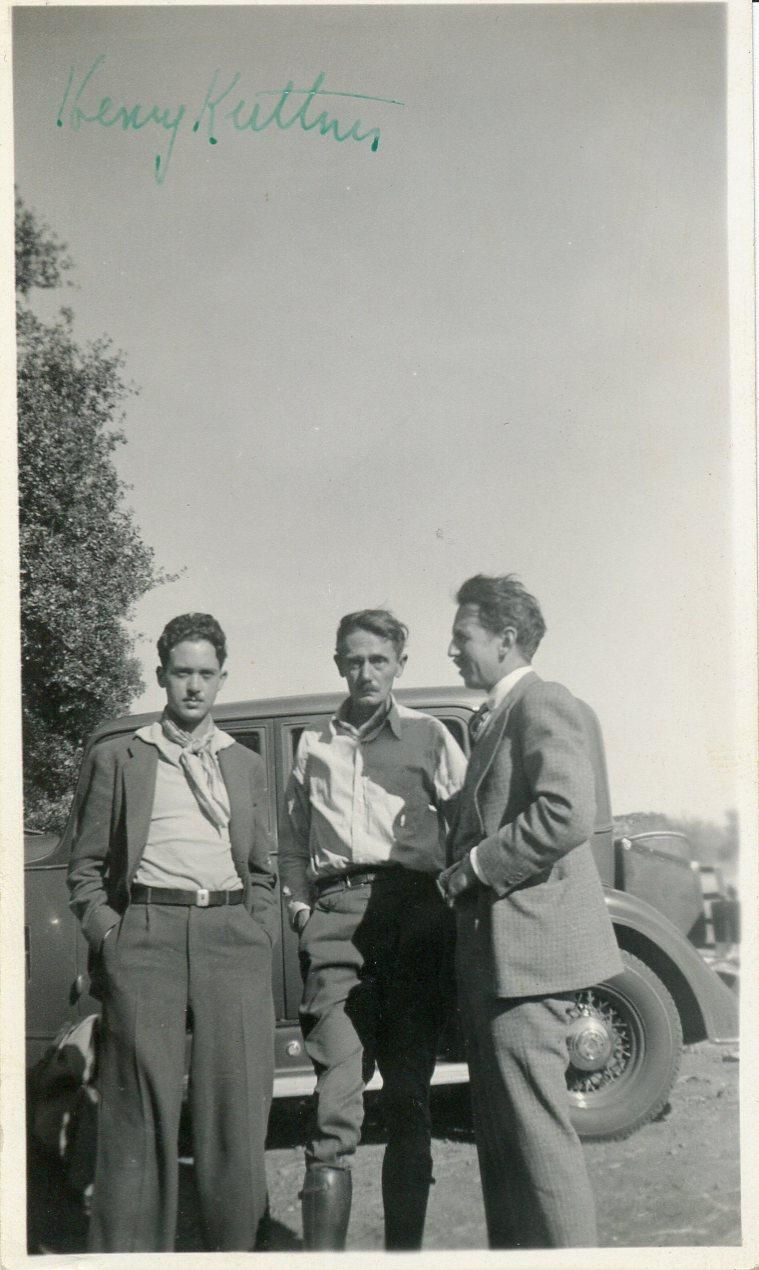Weird Tales & Wedding Bells: The Story of Henry Kuttner & C. L. Moore
- John C. Alsedek
- Nov 13, 2021
- 4 min read
Updated: Feb 3, 2022
By John C. Alsedek:

It’s not that unusual to find married couples who both happen to be writers. After all, they share a common interest, right? Perhaps the most famous example is that of Romantic poet Percy Bysshe Shelley and his wife, Mary, who is today best remembered for penning Frankenstein. But it’s far rarer to find a wife and husband who have as much—or even more—success writing together as they do writing separately. My personal favorite is the duo of Henry Kuttner and Catherine L. Moore, the First Couple of speculative fiction.
Born in 1911, Moore grew up in Indianapolis, Indiana. A sickly child, she took to reading science fiction and fantasy tales as a means of escape from daily life.

She began writing in her teens and was first published at the age of twenty, when the student-run magazine The Vagabond printed three of her stories while she was attending Indiana University. Before she was able to complete her degree, Moore was forced to leave college to take a job at the Fletcher Trust Company. She continued to write in her spare time, taking the pen name C. L. Moore, not to hide the fact that she was a woman but to ensure that her employers at Fletcher Trust didn’t learn of her writing.

During the early and mid-thirties, Moore became a regular contributor to the pulp magazine Weird Tales, doing two full series; one was a science fiction series about adventurer Northwest Smith as he traveled around the solar system, the other was a fantasy series concerning swordswoman Jirel of Joiry (one of the very first female protagonists in the sword-and-sorcery genre). Today, the most famous of these stories is 1933’s "Shambleau," which pits Northwest Smith against a sort of vampiric siren. But both series ended up being quite popular, which is how Moore ended up meeting Henry Kuttner.
Four years her junior, Kuttner was a Los Angeles native who had just made his first sale early in 1936 with a short story entitled "The Graveyard Rats," which appeared in Weird Tales. Kuttner was a big fan of Moore’s work, and so (thinking Moore was a man) wrote to her. The two soon struck up a friendship and made their first collaboration on the 1937 story "Quest of the Starstone," which was a shared adventure of Northwest Smith and Jirel of Jory. As for thinking C. L. Moore was a man? Well, Henry Kuttner eventually learned otherwise; the two were married in 1940, at which point they began their collaborative efforts in earnest.
That isn’t to say that Moore and Kuttner stopped writing individually. In fact, their respective best works came during the 1940s. Moore was a regular contributor to Astounding Science Fiction magazine; it was there that perhaps her greatest work, the novella "No Woman Born," appeared in 1944. She tended to focus more on (though not exclusively) futuristic tales of mankind’s expanse into the solar system and the galaxy, and stories like "Judgment Night" (1943) and "Promised Land" (1950) do an excellent job of balancing the sci-fi elements with explorations of the human condition.

Meanwhile, Kuttner was all over the place in terms of his solo writing. He wrote whole series’ worth of stories in multiple genres: science fiction (his "Gallegher" stories), sword & sorcerery (following Elak of Atlantis), adventure (with Thunder Jim Wade), horror (his numerous contributions to the Cthulhu Mythos shared universe). He even wrote for comic books, penning 18 Green Lantern adventures between 1944 and 1946. Kuttner was also instrumental in encouraging other up-and-coming writers; among those who cite him as a prime influence/mentor are legends such as Ray Bradbury, Richard Matheson, Marion Zimmer Bradley, and Roger Zelazny.
But as great as Moore and Kuttner were separately, their joint works really brought out the best in both of them. Often writing under one of over a dozen pseudonyms, their collaborations were so seamless that, according to mutual friend L. Sprague de Camp, it was often impossible for either Moore or Kuttner to recollect who had written what part of a particular story. They wrote mostly in the genres of science fiction and fantasy, with "Mimsy Were the Borogoves" and "Vintage Season" their two best-remembered works today; the duo also wrote a pair of mystery novels: The Brass Ring (1946) and The Day He Died (1947).

However, their partnership was cut short in the most tragic way when Henry Kuttner suffered a heart attack and died in 1958. Moore never wrote another piece of literary fiction; after a brief career as a scriptwriter for Warner Brothers, during which she wrote for TV shows such as Maverick and 77 Sunset Strip, C. L. Moore retired from writing forever in 1963. It says a lot about her influence that, over twenty years after retiring, she was nominated to be the first female Grand Master of the Science Fiction Writers of America. However, her second husband, Thomas Reggie, asked that the nomination be withdrawn for the saddest of reasons: Moore suffered from severe Alzheimer’s disease, which would eventually claim her life in 1987.
Moore and Kuttner were both members of the "Lovecraft Circle," a group of writers who were associated with/encouraged by the legendary horror writer H. P. Lovecraft. We’ll be taking a look at this unusual assemblage of talent next time. Until then, thanks for tuning in!
SUSPENSE writer, producer, and radio-drama aficionado John C. Alsedek shares the history of early radio and television and the impact it has made on the world of entertainment in his ongoing series for Flapper Press.

Comentarios